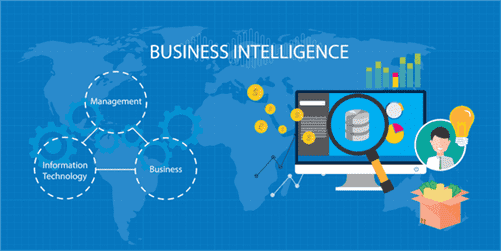01 Jun Top 9 Software Development Models To Choose From
Содержание
Shape Up is a software development approach introduced by Basecamp in 2018. It is a set of principles and techniques that Basecamp developed internally to overcome the problem of projects dragging on with no clear end. Shape Up has no estimation and velocity tracking, backlogs, or sprints, unlike Waterfall, Agile, or Scrum. Instead, those concepts are replaced with appetite, betting, and cycles. As of 2022, besides Basecamp, notable organizations that have adopted Shape Up include UserVoice and Block. Multiple iterations make up the incremental development process (“Lego-style” modular software design is required!).
Although some time is saved, you must take into account the time the developer spends developing the prototypes. If the customer requires many changes, changes their mind frequently, or makes impossible requests, this time developing the prototype can quickly compound. For this reason, it is best to place a cap on the number of iterations allowed before the prototype must be accepted.
Stage 4: Building Or Developing The Product
It allows for continuous software development, faster resolution of problems, happier, more productive teams, and higher employee engagement. A prototype is a version of a system that is developed quickly to see if the customer is happy with it. The client’s involvement in the development process increases the chances that the final product will be accepted early on.

Present at every stage, expectations can be met to the highest standards and within a short timeframe. We wouldn’t recommend the DSMD method for small and medium-sized projects. The software development process is lengthy and complex and requires project management understanding alongside technical skills. Knowing which approach to choose when starting a new development is vital, as it can determine the future success or failure of the project.
Selenium Automation Testing Training 9 Courses, 4+ Projects, 4 Quizzes
If you have a fixed budget to stick to, we wouldn’t recommend using Scrum. Rapid Application Development is formally a parallel development of functions and subsequent integration. RAD model allows users in the development process to review the product.
Their knowledge of the peculiarities of each methodology noticeably facilitates the task. The features expected of each phase of this SDLC model are predefined in advance. From the beginning of the project, a complete specification is not necessary since the software product is distributed in parts. A few changes may also be made to the requirements during the software development process. But, it is important to define the necessary conditions from the beginning, even if the requirements cannot be entirely changed.
SDLC process aims to produce high-quality software that meets customer expectations. The system development should be complete in the pre-defined time frame and cost. SDLC consists of a detailed plan which explains how to plan, build, and maintain specific software. Every phase of the SDLC life Cycle has its own process and deliverables that feed into the next phase. SDLC stands for Software Development Life Cycle and is also referred to as the Application Development life-cycle. If you are interested in our software development services and want to learn more about the differences between process models in software engineering, get in touch with EAB.
Architectural Design
The other name of this model is the Verification and Validation Model because it is based on the Waterfall Model. However, here, in the SDLC, every stage of development includes testing as well. So, you carry out a phase, complete it, test it and only then go to the next phase that will look identical to the previous one with regards to its structure. The Construct stage is the development of the actual software product at each and every spiral.
- Due to its non-structured approach, Agile requires experienced developers who can work independently.
- The development process may start with the requirements to the functional part, which can be expanded later.
- This means that if you want to test a particular phase, all stages of software development first.
- Kanban is concerned with the important features of a project and helps identify ways to improve functionality.
Rapid Application Development, agile development, And Rational Unified Process are examples of the Iterative development models. The Agile methodology helps teams spot and tackle minor issues during software development. The Agile method creates continuous release cycles, where tiny incremental changes from the previous release are implemented.
The project’s major success criteria are the client’s needs and the efforts of the project team. The Extreme Programming technique allows specialists to make changes even after the iteration has begun. Once the processes have been visualized, it is more important to identify problems, such as bottlenecks, so that they may be revised and streamlined if required. This approach is used in situations where immediate results are required.
Extreme Prototyping
Aims to produce high quality systems quickly, primarily via iterative Prototyping , active user involvement, and computerized development tools. The client is involved throughout the development process, which increases the likelihood of client acceptance of the final implementation. Software prototyping is about creating prototypes, i.e. incomplete versions of the software program being developed.
Secure software development life cycle 101 – theSundaily
Secure software development life cycle 101.
Posted: Sat, 10 Sep 2022 05:33:39 GMT [source]
All basic activities (requirements, design, etc.) of the development process are done in parallel across these 4 RUP phases, though with different intensity. For smaller projects, the Agile model provides an accelerated development cycle, shorter time-to-market, and more control over the costs. Because the product is deployed at the end of each iteration, teams can collect feedback, apply the tips to the next phase, and deliver better software.
Feature Driven Development
A Kanban board with sticky notes is used to visually outline the projects and their details, including project owners and progress status. This visualization allows the team to narrow their concentration on the most important feature in development at the moment. As the name of the model suggests, these repeated cycles are iterative and incremental . There is no flexibility in this model because you cannot skip, backtrack, or overlap the stages. Regardless of when errors are found, they cannot be fixed until the maintenance stage.

A waterfall methodology follows a fixed sequence in implementation. This model was highly popular during the early days of programming due to the certainty in project scope. However, the rigidity of its structure also contributes to a high failure rate for many projects. Today, many IT companies agree that employing a software development methodology is crucial for their team. However, the subject of which method is the best remains in question.
What Is Agile?
Clarity between team members during development, thanks to the frequent and transparent development. Software has minimal defects due to the iterative effort in testing and fine-tuning. Needs to review the security of your connection before proceeding. Some flexibility in responding to changing market conditions or customer needs. Each phase is carried out completely before proceeding to the next. The ability and collaboration of the customer to express user needs.
Factors In Choosing A Software Process
It allows incremental releases of the product or incremental refinement through each iteration around the spiral. Agile and Lean models suit small- and medium-sized projects with rapid changes required. Businesses save both money and time as each iteration is discussed closely between the customer and the development team.
With daily meetings and an experienced Scrum Master to oversee and report on the project progress, this branch of agile is ideal if you want to take a more collaborative, hands-on approach. In this article, we have discussed the software development models to understand the relationship between the development phase and the testing phase during development. The use of the development model is based on the project and its requirements, you need to choose what development model should fit for the project. There is a number of agile methodologies available for use during software development, but Scrum agile methodology and Extreme Programming i.e.
This Big Bang Model does not follow a process/procedure and there is a very little planning required. Even the customer is not sure about what exactly he wants and the requirements are implemented on the fly without much analysis. Once you have the clear and detailed product requirements, it is time to design the complete Enterprise Software Development Company system. The system design will have the understanding and detailing the complete hardware and communication setup for the product under development. Doing this at an earlier stage leaves more time for the actual test execution later. In this incremental model, the whole requirement is divided into various builds.
Established in the 70s, it was the first methodology to transform the way systems are built. Dependency on technically strong team members for identifying business requirements. Agile methods are being widely accepted in the software world recently. The data transfer and communication between the internal modules and with the outside world is clearly understood and defined in this stage. With this information, integration tests can be designed and documented during this stage. Under the V-Model, the corresponding testing phase of the development phase is planned in parallel.
If you don’t, you run the risk of making architectural decisions that lead to disjointed software. So if you want to go agile because it means jumping into the action from day one, you’ll be disappointed. A certain degree of planning will still be necessary if your https://globalcloudteam.com/ project is to be successful. The initial Prototype is developed in this stage, where the very basic requirements are showcased and user interfaces are provided. These features may not exactly work in the same manner internally in the actual software developed.
This phase starts with gathering the business requirements in the baseline spiral. In the subsequent spirals as the product matures, identification of system requirements, subsystem requirements and unit requirements are all done in this phase. The disadvantage of waterfall development is that it does not allow much reflection or revision.


Sorry, the comment form is closed at this time.